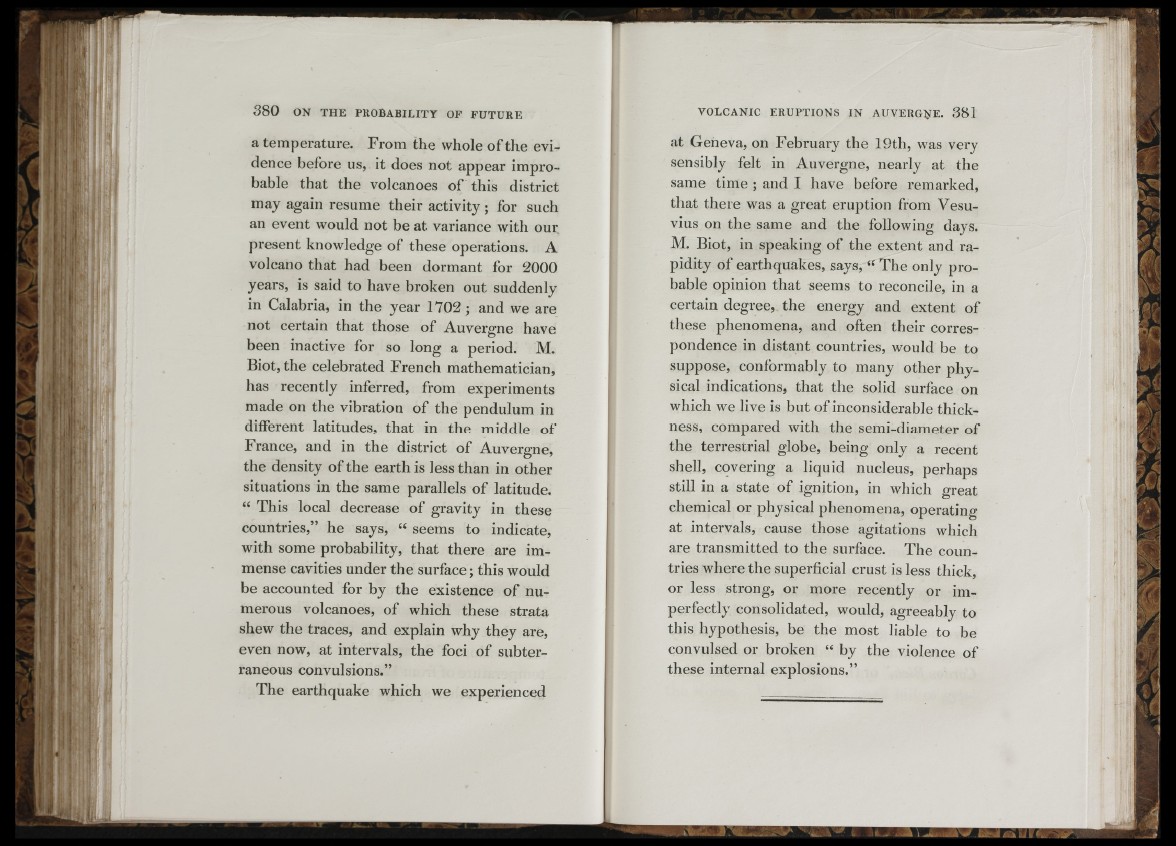
H
&
J!
§11 A ;
ili ‘
Ia I
■ il
. :i MiV
r ! :l
■ I
fi :
Il ;f !
,:■ a
;li x:
^ 1 : i4:l
î ■;
; . M
• 'S
i
. ï • s
■n’ i* : 7 ?
’i: ri i
380 ON THE PROBABILITY OF FUTURE
a temperature. From the whole o f the evidence
before us, it does not appear improbable
that the volcanoes of this district
may again resume their activity; for such
an event would not be at variance with our
present knowledge of these operations. A
volcano that had been dormant for 2000
years, is said to have broken out suddenly
in Calabria, in the year 1702 ; and we are
not certain that those of Auvergne have
been inactive for so long a period. M.
Biot, the celebrated French mathematician,
has recently inferred, from experiments
made on the vibration of the pendulum in
different latitudes, that in the middle of
France, and in the district of Auvergne,
the density of the earth is less than in other
situations in the same parallels of latitude.
“ This local decrease of gravity in these
countries,” he says, “ seems to indicate,
with some probability, that there are immense
cavities under the surface; this would
be accounted for by the existence o f numerous
volcanoes, of which these strata
shew the traces, and explain why they are,
even now, at intervals, the foci of subterraneous
convulsions.”
The earthquake which we experienced
VOLCANIC ERUPTIONS IN AUVERGNE. 381
at Geneva, on February the 19th, was very
sensibly felt in Auvergne, nearly at the
same time ; and 1 have before remarked,
that there was a great eruption from Vesuvius
on the same and the following days.
M. Biot, in speaking of the extent and rapidity
of earthquakes, says, “ The only probable
opinion that seems to reconcile, in a
certain degree, the energy and extent of
these phenomena, and often their correspondence
in distant countries, would be to
suppose, conformably to many other physical
indications, that the solid surface on
which we live is but of inconsiderable thickness,
compared with the semi-diameter of
the terrestrial globe, being only a recent
shell, covering a liquid nucleus, perhaps
still in a state of ignition, in which great
chemical or physical phenomena, operating
at intervals, cause those agitations which
are transmitted to the surface. The countries
where the superficial crust is less thick,
or less strong, or more recently or imperfectly
consolidated, would, agreeably to
this hypothesis, be the most liable to be
convulsed or broken “ by the violence of
these internal explosions.’